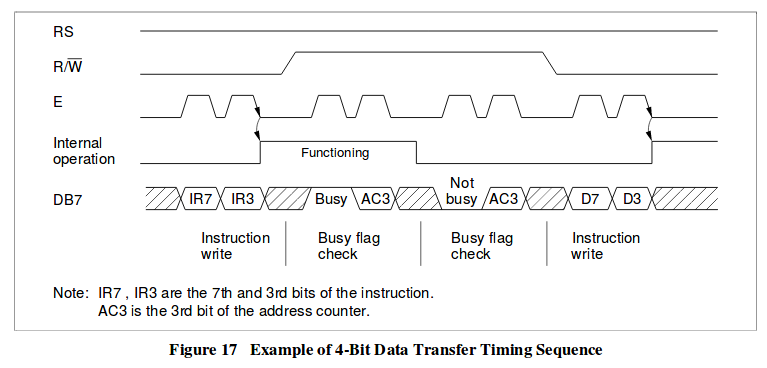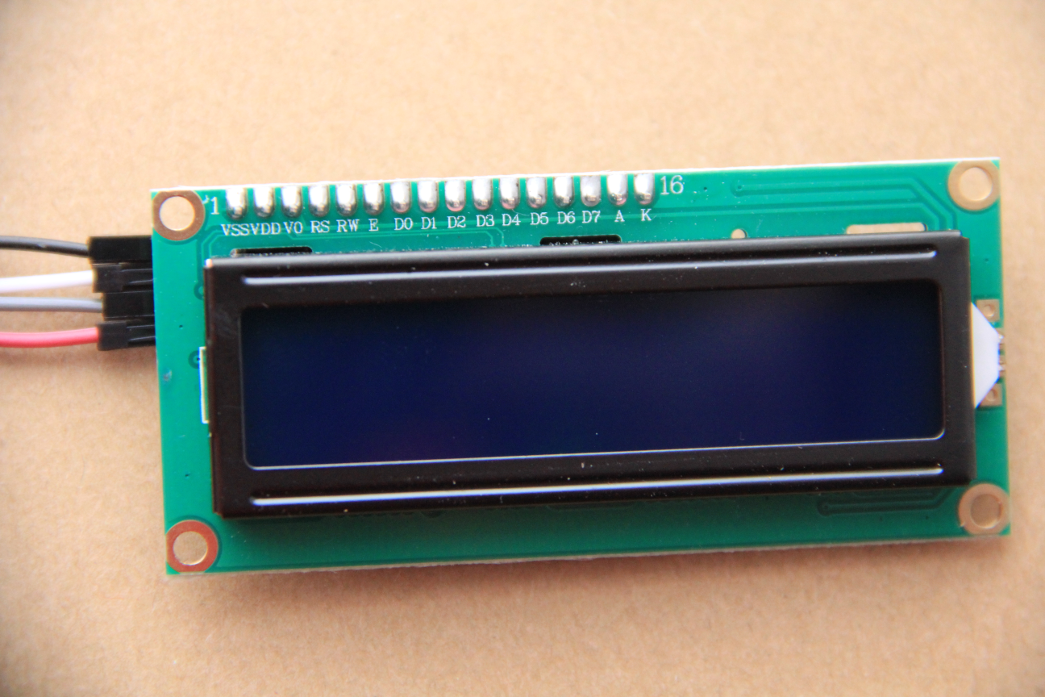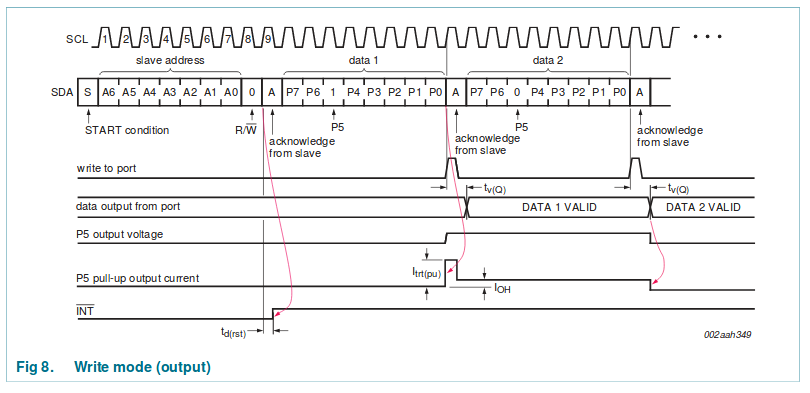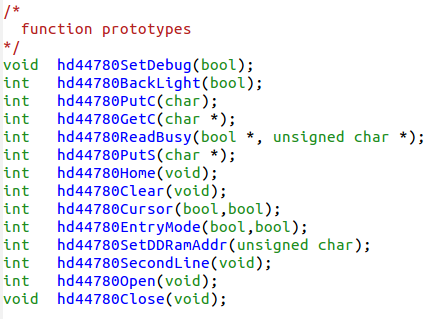
Often embedded systems do not have a screen, keyboard and mouse associated with them.
Small devices in the field may nevertheless need to display some values to the user
Small and cheap LCD displays can take over this task
Our display can be used for many purposes (see the open day):
- Name display
- Weather station
- Voltmeter
The PCF8574 I2C I/O expander allows to limit the number of connection wires to just four.
It is a kind of a shift register: serial in, parallel out
It is a kind of a shift register: serial in, parallel out

| The display needs a large number of interface signals to be able to work:
|
|
Even though it looks complicated at first sight,
writing a data byte to the hd44780 controller via the
pcf8574 I/O extender is actually pretty simple:
 After this instruction the 8 data bits of bVal lie at the input of the hd44780 controller.
After this instruction the 8 data bits of bVal lie at the input of the hd44780 controller.
 After this instruction the 8 data bits of bVal lie at the input of the hd44780 controller.
After this instruction the 8 data bits of bVal lie at the input of the hd44780 controller.
- Set the back light on or off
- To send a pulse on the E (strobe) line
- bitwise or operator: |
- bitwise and operator: &
- bit inversion: ~
As already explained several times, a library must supply:
- The binary code: libhd44780.so
- The include file hd44780.h
In addition to the prototypes, have a look at the doxygen  documentation
and you should be able to program the display.
Of course you have to include
-I/opt/ucc/include in your CFLAGS
-L/opt/ucc/lib in your LDFLAGS
and -lhd4780 in your LDLIBS
However, we want to understand what is happening behind the scene!
documentation
and you should be able to program the display.
Of course you have to include
-I/opt/ucc/include in your CFLAGS
-L/opt/ucc/lib in your LDFLAGS
and -lhd4780 in your LDLIBS
However, we want to understand what is happening behind the scene!
Before starting to write the library we must first test if
- We can initialize the device ?
- We can write something to it and read it back ?
- Or can we find any other function showing us that the device responds?
To give us some confidence, letís try to switch the back light on and off:
This one is easy as it does not access the hd44780. It does test the PCF8574 though! Switching bit 7 in the data word does the trick. Later we will read a byte from the display and and/or bit seven into the byte read before writing it back.
This one is easy as it does not access the hd44780. It does test the PCF8574 though! Switching bit 7 in the data word does the trick. Later we will read a byte from the display and and/or bit seven into the byte read before writing it back.




--
Comments
| I | Attachment | History | Action | Size | Date | Who | Comment |
|---|---|---|---|---|---|---|---|
| |
2linedisplay.png | r1 | manage | 873.1 K | 2017-11-06 - 15:33 | UnknownUser | |
| |
4bitTransfer.png | r1 | manage | 24.0 K | 2017-11-06 - 15:33 | UnknownUser | |
| |
4bitdataTransfer.png | r1 | manage | 28.0 K | 2017-11-06 - 15:33 | UnknownUser | |
| |
displaySignals.png | r1 | manage | 16.0 K | 2017-11-06 - 15:33 | UnknownUser | |
| |
i2c_pcf8574.png | r1 | manage | 1014.0 K | 2017-11-06 - 15:33 | UnknownUser | |
| |
i2c_write_byte.png | r1 | manage | 14.9 K | 2017-11-06 - 16:10 | UnknownUser | |
| |
initProc1.png | r1 | manage | 29.9 K | 2017-11-06 - 15:33 | UnknownUser | |
| |
initProc2.png | r1 | manage | 27.7 K | 2017-11-06 - 15:33 | UnknownUser | |
| |
libFunctions.png | r1 | manage | 28.5 K | 2017-11-06 - 15:33 | UnknownUser | |
| |
pcf8574ifce.png | r1 | manage | 63.7 K | 2017-11-06 - 15:33 | UnknownUser | |
| |
pcf8574write.png | r1 | manage | 33.8 K | 2017-11-06 - 16:08 | UnknownUser | |
| |
strobe.png | r1 | manage | 68.3 K | 2017-11-06 - 15:33 | UnknownUser |
This topic: Embedded_Systems > WebHome > LectureSlides > Lecture11:The2LineLCDDisplay
Topic revision: r3 - 2017-11-12 - uli
Ideas, requests, problems regarding TWiki? Send feedback






